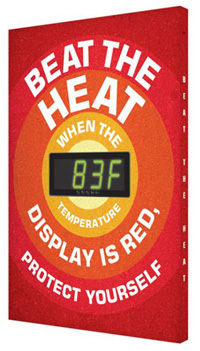



Find all of your laboratory and workplace safety supplies at Safety Emporium!
 Mutagen |
 Glossary Index |
 NAICS |
| MSDS Topics |
Free Sites | FAQ's | Regulations | Glossary | Software | Suppliers |
| Books | Forum | Poll | Fun stuff | Quiz | Store | |
| Understand your MSDS with the MS-Demystifier | Search ALL our MSDS info | |||||
Myalgia is muscle pain. The term is derived from the Greek words "myos" (muscle) and "algos" (pain).
Myalgia can occur in an isolated muscle or in multiple muscles across the body. The condition can be acute (short-term) or chronic (long-term). There are a number of possible causes (see below).
Myalgic is the adjective form of myalgia.
Myalgia may be the result of overuse or injury of muscles or as a symptom of the following conditions:
Treatment for myalgia may be available and varies depending on its cause. Rest, ibuprofen, stretching and massage may be helpful. If the pain is severe or persists for more than 36 hours, see a doctor. Also call a doctor if the pain is associated with a change in medicine, tick bite, or visible sign of infection or rash. Seek immediate medical care or go to the emergency room if you have the following conditions associated with myalgia:

Help your workers avoid injury with heat stress safety products from Safety Emporium.
Myalgia due to muscle overuse or injury may be prevented by:
Fibromyalgia is a little-understood condition involving chronic widespread pain and a heightened and painful response to gentle touch. As diagnosis is usually made by ruling out all other causes, and there has been some debate as to whether this is a "real" disorder. However, the National Institutes of Health and other medical organizations have classified this as a true medical disorder. The specific cause or causes are still unclear, but appear to be a combination of environmental and hereditary factors. We have never seen this term used on a Safety Data Sheet, but see Further Reading below for more information.
Myalgia and associated conditions may be caused by exposure to certain chemicals. For example, ingestion of L-tryptophan (5-HTP), which can be found in some foods and dietary supplements, is thought to cause Eosinophilia Myalgia Syndrome (see Further Reading below).
Always read your Safety Data Sheet before working with a new chemical so you will be aware of any possible symptoms of exposure. You'll find these conveniently listed in Section 11 (toxicological information) and you can find ways to protect yourself in Section 8 (exposure controls/personal protection) of the SDS.

Help your workers beat dehydration with heat stress prevention signs from Safety Emporium.
See also: atrophy, paresthesias.
Additional definitions from Google and OneLook.
Entry last updated: Friday, January 6, 2023. This page is copyright 2000-2025 by ILPI. Unauthorized duplication or posting on other web sites is expressly prohibited. Send suggestions, comments, and new entry desires (include the URL if applicable) to us by email.
Disclaimer: The information contained herein is believed to be true and accurate, however ILPI makes no guarantees concerning the veracity of any statement. Use of any information on this page is at the reader's own risk. ILPI strongly encourages the reader to consult the appropriate local, state and federal agencies concerning the matters discussed herein.